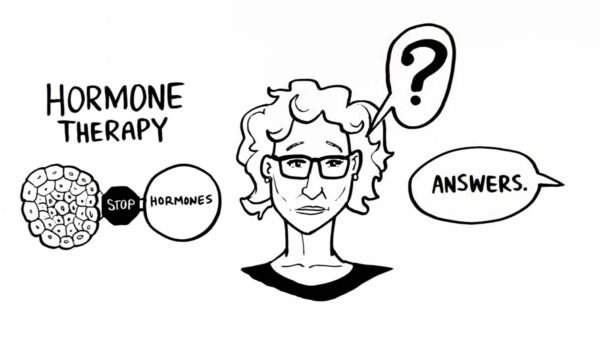Strabismus is a eye disorder in which the eyes are not properly aligned with each other and this disorder can cause double vision, eye strain and problems with depth perception. Strabismus can be caused by a variety of factors, including muscle imbalances, neurological issues or a misalignment of the bones of the eye socket.
Strabismus is a eye alignment problem which cause serious mental problems especially in childhood and adolescence such as low self esteem and poor communication with friends or social. Also children who suffering strabismus may have to face peer bullying in schools and living with some vision problems.
What is Exotropia ?
Exotropia is a kind of strabismus in which one eye turns outward away from the nose. Exotropia is also known as “wall-eyed” or “cross-eyed.” Exotropia can be classified into three category: intermittent, constant and accommodative.
- Intermittent exotropia: The eye turns outward only occasionally, often when the child is tired or has a cold.
- Constant exotropia: The eye is always turned outward, and eye wrong situation is present all the time.
- Accommodative exotropia: This type of exotropia is caused by a focusing problem, and the eye turns out when the child is trying to focus up close.
Exotropia can lead to variety of symptoms, including double vision, eye strain, and problems with depth perception. If left untreated, it can also lead to amblyopia, also known as “lazy eye.” The treatment for exotropia depends on the type, severity, and frequency of the condition.


What is Esotropia ?
Esotropia is a type of strabismus in which one eye turns inward towards the nose. This condition is also known as “cross-eyed.” Esotropia can be classified into two category: intermittent and constant.
- Intermittent esotropia: The eye turns inward only sometime, often when the child is tired or has a cold.
- Constant esotropia: The eye is always turned inward, and the wrong alignment is present all the time.
It is worth mentioning that esotropia is the most common type of strabismus in infants and young children. It is usually because of a problem with the eye muscles or the brain’s ability to control eye movements. Constant esotropia is more likely to be caused by a problem with the muscles or nerves controlling the eyes while intermittent esotropia is more likely to be caused by a problem with the focusing system of the eyes.
Causes of Strabismus in Children :
There are a few possible causes of strabismus in children. Some of the most common include:
- Muscle imbalances: The muscles that control the movement of the eye may be stronger or weaker on one side, causing the eye to turn in or out.
- Neurological issues: Some neurological conditions, such as cerebral palsy or brain tumors, can affect the muscles that control eye movement and lead to strabismus.
- Genetic factors: Strabismus can run in families, and some genetic conditions such as Duane syndrome are associated with strabismus.
- Refractive errors: Children with uncorrected refractive errors such as nearsightedness, farsightedness, or astigmatism may develop strabismus as a way of trying to see more clearly.
- Premature birth or low birth weight: Children born prematurely or with a low birth weight may be cause of developing strabismus.
- Other possible causes can include eye injury, infection, or inflammation, as well as certain medical conditions such as diabetes or thyroid disease.
Beside the upper reasons in some cases, cause of strabismus in children may not be known or clearly defined. For defined strabismus you need to check up a eye doctor ore eye clinic for simple eye examination.
Tips For Strabismus
Here are some tips for who suffering strabismus, especially parents should read this tips for help children :
- Wear glasses or contact lenses as prescribed by your eye doctor. These can help correct any underlying refractive errors that may be contributing to the misalignment of the eyes.
- Use an eye patch or wear glasses with a patch on one lens to help the brain learn to use the eye that is turned in or out.
- Regularly perform eye exercises as advised by the eye doctor, these exercises can help for strengthen the eye muscles and improve eye alignment.
- Seek regular follow-up with your eye doctor to monitor the condition and adjust the treatment plan if it need.
- Educate yourself and your child about strabismus, its reasons, symptoms and treatment options.
- Be patient, as it may take time for the treatment to be effective as you want.
- In case of constant strabismus that does not respond to glasses, patches or exercises, eye muscle surgery might be needed to correct the problem, which is a safe and effective treatment option. It is important to early detection and treatment of strabismus is crucial to prevent the development of amblyopia (lazy eye) and to improve the chances of successful treatment.
Treatment of Strabismus
Strabismus treatment can include ones or a combination of the following options:
- Glasses or contact lenses: These can help correct any underlying refractive errors that may be contributing to the misalignment of the eyes.
- Eye patching: This involves covering the stronger eye with a patch or glasses with a patch on one lens to encourage the brain to use the weaker eye. This treatment is particularly effective for amblyopia (lazy eye) caused by strabismus.
- Eye exercises: These exercises can help strengthen the eye muscles and improve eye alignment.
- Prism glasses: These glasses contain special lenses that bend light to help align the eyes.
- Vision therapy: This is a type of treatment that uses a series of eye exercises and activities to improve eye coordination and alignment.
- Eye muscle surgery: This is a surgical procedure that involves adjusting or tightening the muscles that control the movement of the eye. Surgery is considered when other treatments have failed, or when the strabismus is constant and significant enough to cause significant visual problems.
The best treatment plan will depend on the type, severity, and frequency of the strabismus, as well as the age of the patient, any underlying medical conditions, and the patient’s individual needs and preferences.
What is Strabismus Treatment Surgery ?
Strabismus treatment surgery, also mostly known as eye muscle surgery, is a surgical procedure that involves adjusting or tightening the muscles that control the movement of the eye. The aim of the surgery is to align the eyes and get a better vision for patient.
The most common types of strabismus surgery include:
- Recessing the muscle: This method involves moving the muscle further back on the eye and weakening it. This is often done for an eye that is turned in (esotropia).
- Resection the muscle: This method involves removing a small part of the muscle, which will weaken the muscle and allow it to be moved forward. This is often done for an eye that is turned out (exotropia).
- Adjusting the tension of the muscle: This method involves changing the position or tension of the muscle to improve its function.
The surgery is offen performed under general anesthesia and takes about 1-2 hours per eye. After surgery, the patient will need to wear an eye patch for a period of time and will be given eye drops to prevent infection and inflammation other side effects.
It’s important to remember that not all patients with strabismus surgery and the decision to perform surgery is based on the individual case, the type, and severity of the strabismus, as well as other factors such as the patient’s age and overall health.
Recovery time after strabismus surgery may change but usually, patients can expect to return to normal activities and daily life within a few weeks. The success rate of surgery is very high, but it’s important to follow up with the eye doctor regularly to ensure that the eyes have healed properly and to monitor any potential side effects or complications. Also tou need to be careful personal hygiene rules and doctors instructions after surgery for best results.
What is the Risk of Eye Muscle Surgery ?
Eye muscle surgery, also mostly known as strabismus surgery, is a safe and effective procedure, but like any surgery there are some potenial risks you need to know. Some of the potential risks of strabismus surgery include:
- Infection: As with any surgical procedure, there is a small risk of infection. This risk can be minimized by following proper post-operative care instructions, including taking antibiotics as prescribed and keeping the eye clean and protected.
- Bleeding: There is a small risk of bleeding during or after the surgery, which may require additional treatment.
- Double vision: In some cases, the surgery may cause temporary or permanent double vision. This can usually be corrected with glasses or additional surgery.
- Under or over correction: The surgery may not achieve the desired results, and the eyes may still be misaligned. In this case, a revision surgery might be needed.
- Dry eye: Some patients may experience dry eye after surgery, which can be treated with artificial tears or other medications.
- Scarring: The surgery may cause scarring of the eye muscles, which can cause the eyes to be misaligned again.
- Anesthesia risks: As with any procedure that requires anesthesia, there is a small risk of complications related to the anesthesia.
It’s important to discuss the risks and benefits of surgery with your eye doctor before making a decision about treatment. Your doctor will be able to provide more specific information about the risks associated with your particular case and help you understand the potential risks against the benefits of the surgery.



LASIK and Using for Strabismus Treatment
LASIK or laser-assisted in situ keratomileusis, is a kind of refractive surgery that is used to correct vision problems such as nearsightedness, farsightedness, and astigmatism. It is not typically used to treat strabismus, which is a misalignment of the eyes.
Strabismus is caused by muscle imbalances or neurological issues that affect the muscles that control eye movement. LASIK, on the other hand, is used to correct refractive errors by reshaping the cornea of the eye so that light entering the eye is properly focused on the retina.
In some cases, LASIK may be used to correct in some types of strabismus that are caused by a refractive error. For example, if a child has esotropia and also has significant hyperopia (farsightedness), LASIK may be used to correct the hyperopia, which may help to improve the alignment of the eyes. However, LASIK is not a treatment for strabismus caused by muscle imbalances or neurological issues.
It’s important to note that LASIK is not recommended for children under 18 years of age, as their eyes are still developing and the long-term effects of the surgery are not fully understood. In such cases, other treatments such as glasses, eye patches or eye muscle surgery are more appropriate.
If you or your child has strabismus, it is important to consult with an ophthalmologist or a pediatric ophthalmologist who specializes in strabismus. They will be able to evaluate your condition and recommend the most appropriate treatment options for you.
Also ou can find detailed info about eye health in below page:

